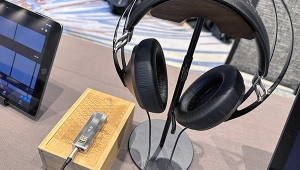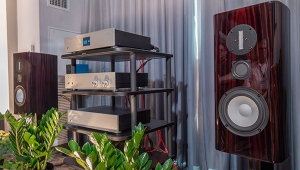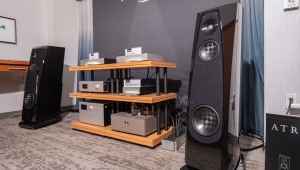| Columns Retired Columns & Blogs |
Book Review: "High Fidelity Audio/Video Systems: A Critical Guide for Owners" Page 2
A strange and curious aspect of this book is Ferstler's naked idolatry for loudspeaker designer Roy Allison, which at times borders on puppy love; Allison helped with the book in the early draft and, presumably coincidentally, is mentioned an astounding 52 times in 232 pages of text, or once every 4.5 pages. The chapter on speakers could be mistaken for Allison promotional literature, with photo after photo after diagram of Allison drive-units and speaker systems, some of which have been out of production for years. Howard even spends two full pages (pp.42 & 43) discussing the discontinued Allison "Electronic Subwoofer," an active EQ unit that supplied a boost at and below the loudspeaker's -3dB point to give acoustic suspension speakers flat frequency response all the way down to 20Hz. In Howard's mind, "the Electronic Subwoofer failed in the marketplace, in spite of its abilities, for one basic reason: it was actually too good."
Couldn't have been all those blown woofers from that hellacious bass boost, could it? Howard sez NO; "The failure of the ESW in the marketplace was a sign of the myopic outlook of most audiophiles today." Beautiful! And best of all, Ferstler doubles back on himself in a later chapter in one of many contradictions throughout the book, when on p.78 he decries the use of bass tone controls because "they create one problem (like woofer overload, for instance), while failing to successfully solve another."
But it's not just old Allison products that Ferstler fills his book with; there's plenty of old AR stuff in here, too! (Roy Allison was, of course, Technical Director at AR for many years before leaving to start his own company.) Want to know when Ferstler's development became arrested? "Hook a CD player and a good amplifier to a pair of AR-5s or AR-3as and you will have very up-to-date sound," he says on p.18. Of the old AR-LST (pictured on p.21 and p.82, with a picture of the similar-looking AR-MST/1 on p.34), Ferstler judges it "can still hold its own with just about anything." And how about that Betty Grable, eh? Hubba hubba!
This praise for products he presumably once owned would all be merely amusing if Ferstler also included more than a scant handful of modern loudspeakers in the discussion, but then that would've been helpful to someone looking to buy a pair of speakers that are currently in production.
Electronics fare no better in Howard's World; rather than be informed about gear he can actually buy, the reader instead mostly encounters photos and praise for countless products Ferstler readily admits are long since discontinued, like, incredibly, the original AR receiver from the '60s, pictured on p.96 and of which Ferstler says, "it is hard to fault." Yup, and there hasn't been any progress in solid-state design since then, right Howie?
Perhaps nowhere is Ferstler more pathetic than in his relentless attacks upon the high end: listeners who buy anything more exotic than the ancient AR receiver or who need more power than 30Wpc (or 100Wpc; he's a little inconsistent here), are derided as "nuance-seeking buffs" and "fringe types." The high-end press, too, comes in for its fair share of arbitrary attacks: he warns the reader, for example, that "when a tester says that a $2000 amplifier sounds 'gritty,' you can be reasonably sure he is a crank" (p.194), and "Amplifier testing (and, I suppose, preamplifier and CD player testing, too) is the measuring rod for testing a tester. If a reviewer spends too much time describing the 'sound' of such a device, I would consider his or her integrity and expertise suspect" (p.195).
This from a man who goes on to champion "big league" reviewers such as Speaker Builder's David Moran, who is noted in the book as recommending that some brightish speakers be aimed directly at each other for best imaging, and David "All Amplifiers Sound Alike" Clark, whose infamous 1987 double-blind test demonstration that a $12,000 pair of Futterman OTL tube amplifiers sounded identical to a $250 Pioneer receiver is recounted proudly on p.108 as a landmark event in audio. Ferstler fawns like some lovesick groupie over these "big league" reviewers, because "they realize what their employers would have to face if a serious error was made in judging a product made by a major manufacturer" (p.7). Ah, so.
- Log in or register to post comments




































